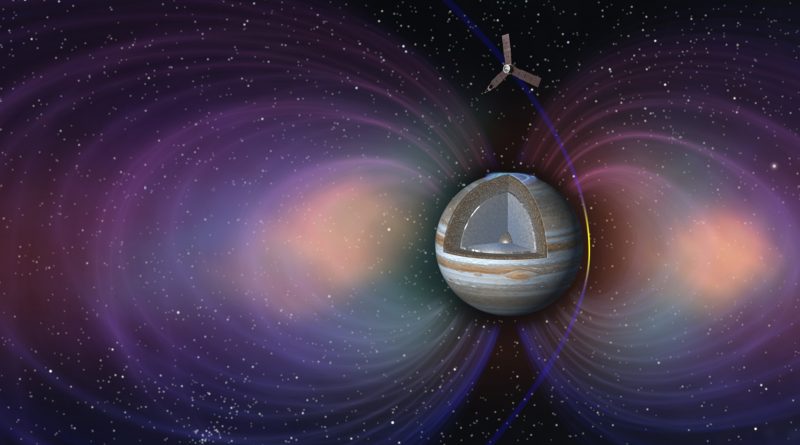Juno Spacecraft Recovers from Safe Mode, adjusts Orbit for next Jupiter Pass
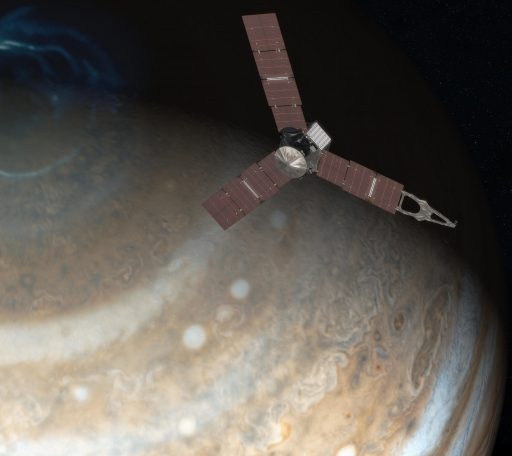
NASA’s Juno spacecraft has been recovered from an unplanned Safe Mode and is entering preparations for a December 11 flyby of Jupiter while teams continue studying a pair of technical issues on the spacecraft as it continues orbiting the Gas Giant in a highly elongated orbit.
Juno’s Orbital Insertion Maneuver on July 4th put the spinning spacecraft into an orbit taking 53.5 days for each lap around the planet, traveling as close as 4,200 Kilometers to Jupiter’s cloud tops before venturing out again to a distance of over eight million Kilometers.
Originally, Juno was expected to make a pair of capture orbits ahead of a planned October 19 engine firing to trim its orbit to a 14-day period for the primary science phase of the mission. This rocket burn, known as the Period Reduction Maneuver, was postponed in the week prior due to a sluggish response from a pair of check valves within the spacecraft’s main propulsion system seen during a checkout operation.
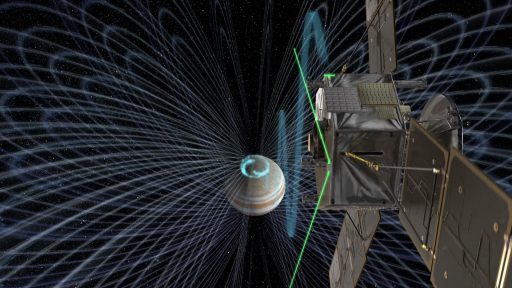
With the engine burn postponed, the Juno team was hoping to operate the spacecraft’s instrument suite during last Wednesday’s close encounter to gather scientific data adding to the data set collected on the vehicle’s first orbital brush past Jupiter on August 27. However, just thirteen hours prior to closest approach, the spacecraft entered an unplanned safe mode when a software performance monitor noticed an unusual signature and responded by triggering a reboot of the main spacecraft computer which sent Juno into safe mode.
As part of the safe mode procedure, Juno deactivated non-essential systems and entered a sun-pointed orientation – causing the mission to lose a valuable science pass across Jupiter.
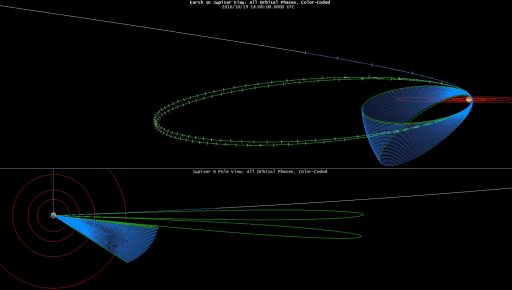
The Juno Team worked through their usual fault recovery, first ensuring the spacecraft was generating power and restoring high-rate communications before studying the fault signature. Juno existed Safe Mode at 17:05 UTC on Monday, but the suspect software signature remains under investigation by the team to fully understand what caused the computer reboot and avoid any future occurrences.
On Tuesday, Juno fired up its thrusters at 18:51 UTC for a 31-minute Orbit Trim Maneuver that changed the spacecraft’s velocity by 2.6 meters per second. The Orbit Trim Maneuver is part of every orbit around Jupiter and is needed to precisely target the timing (and with that the location) of the next close flyby of Jupiter. Tuesday’s maneuver set the next Perijove pass for December 11 at 17:03 UTC.
“Juno exited safe mode as expected, is healthy and is responding to all our commands,” said Juno Project Manager Rick Nybakken. “We anticipate we will be turning on the instruments in early November to get ready for our December flyby.”
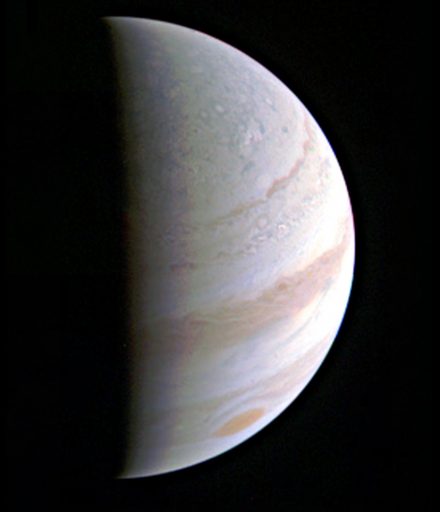
In a statement NASA explicitly stated that all instruments will be running for the December 11 Perijove pass which would mean no Period Reduction Maneuver can be performed and Juno will remain in its Capture Orbit for at least one more revolution.
The geometry of the close passes by Jupiter in the Capture and Science Orbits is essentially identical in terms of the altitude and flight path with approximately three hours of science measurements on either side of the close approach. In the Capture Orbit, science passes are few and far between which, if a maneuver into the nominal science orbit is not possible, would mean Juno has to operate for a five-year mission to obtain the data that was to be collected in just 20 months per the original mission design.
If and when Juno can spiral down into its science orbit will depend on the status of its Main Propulsion System as engineers continue studying the off-nominal opening of a pair of check valves during the checkout of the system ahead of the planned Period Reduction Maneuver.
The check valves that were sluggish to open for some reason are responsible for allowing high-pressure Helium to be routed from storage tanks through pressure regulators and into the propellant tanks to keep them at the proper pressures required by the pressure-fed main engine. The main purpose of the check valves is to remain open when Helium is flowing into the propellant tanks and close to prevent reverse flow & mitigate propellant vapor migration into the pressurant tanks.
The Period Reduction Maneuver is the final time the LEROS-1B main engine is planned to be used after successfully firing for Juno’s Deep Space Maneuvers and the critical Jupiter Orbit Insertion Maneuver.

